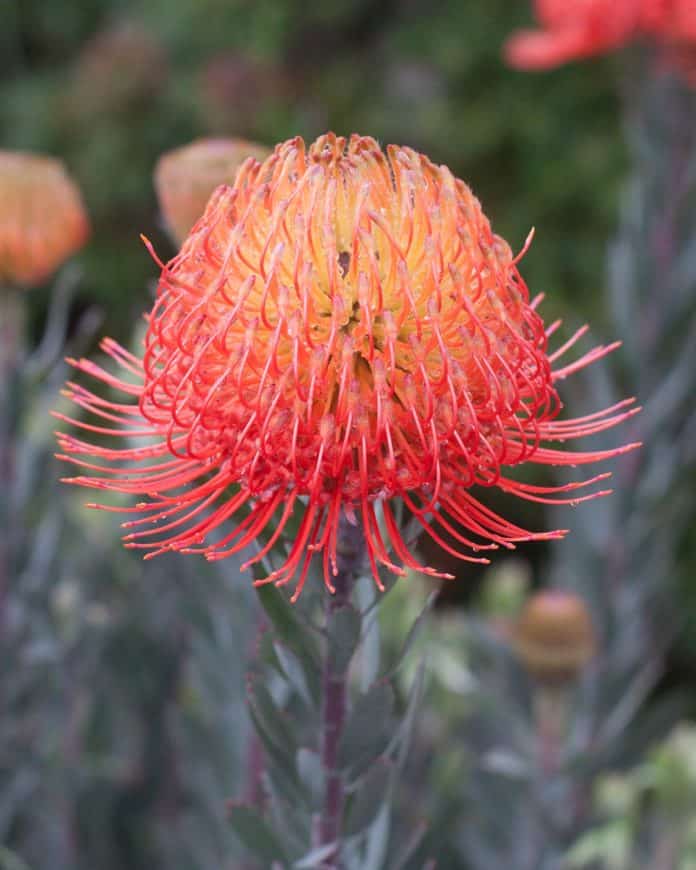Sun-Kissed Fireworks: Unveiling the ‘So Exquisite’ Pincushion Protea
The world of plants is full of surprises, and few families are as surprising and spectacular as the Proteaceae. This ancient family, with roots stretching back millions of years, boasts an incredible diversity of forms, from the towering tree-like Proteas of South Africa to the delicate, spidery Grevilleas of Australia.
Among these botanical wonders sits the ‘So Exquisite’ Leucospermum, a cultivar aptly named for its captivating beauty. This South African native belongs to a genus known as "pincushion proteas" for their flower heads resembling brightly-colored pincushions studded with pins.
But ‘So Exquisite’ is more than just a pretty face. It offers a fascinating glimpse into the unique adaptations and ecological roles that make Proteaceae so special.
A Flower Unlike Any Other:
Imagine a flower that doesn’t look like a flower. Instead of delicate petals, you see dozens of long, slender styles tipped with pollen-bearing anthers. These styles, often brightly colored, radiate outwards from a central disc, creating the characteristic "pincushion" look. As the flower matures, the styles curve and twist, adding to its mesmerizing appearance.
The ‘So Exquisite’ cultivar is particularly striking. Its fiery orange and yellow styles seem to burst forth like miniature fireworks, creating a dazzling display that demands attention. This vibrant coloration is no accident; it serves to attract the plant’s primary pollinator – the nectar-loving Cape Sugarbird.
Thriving in Challenging Environments:
Like many Proteaceae, ‘So Exquisite’ hails from the nutrient-poor soils of the Cape Floristic Region in South Africa. This unique ecosystem, known for its incredible plant diversity, has shaped the evolutionary trajectory of Proteaceae, leading to remarkable adaptations.
One such adaptation is their ability to thrive in low-phosphorus soils. While most plants struggle in such conditions, Proteaceae have developed specialized roots called "proteoid roots." These roots form dense mats that excrete organic acids, increasing their ability to access and absorb phosphorus, even in the most infertile soils.
Bringing a Touch of the Exotic Home:
With its vibrant colors, unusual form, and fascinating backstory, it’s no wonder that ‘So Exquisite’ is gaining popularity among gardeners seeking unique and drought-tolerant plants. While it thrives in the mild climates of its native South Africa, it can also be successfully cultivated in other parts of the world with similar conditions.
Caring for ‘So Exquisite’ requires a light touch. Provide it with well-drained soil, plenty of sunshine, and good air circulation to prevent fungal diseases. Once established, it requires minimal watering, making it a great choice for water-wise landscaping.
Adding a ‘So Exquisite’ to your garden isn’t just about adding a splash of color – it’s about inviting a piece of the Cape’s extraordinary biodiversity into your backyard. It’s a chance to marvel at the ingenuity of nature and appreciate the intricate connections that bind plants and their pollinators. So, next time you encounter this fiery beauty, take a moment to appreciate the incredible story it has to tell.



